25.Do It Yourself — or Maybe Just Ask Someone Else
It’s fun to let your imagination run wild when it comes to construction projects at home. The possibilities are endless, and the world (well, your backyard) is your oyster. But while fantasizing about your potential DIY masterpiece is the easiest thing in the world, actually making it a reality is a different story altogether. There are endless expenses to think about, a lot of migraine-inducing permits and paperwork—and let’s face it, most of us are guilty of overestimating our abilities as handy-men and women just a little. Who needs a professional, right? If we’re being honest with ourselves, usually we all do.
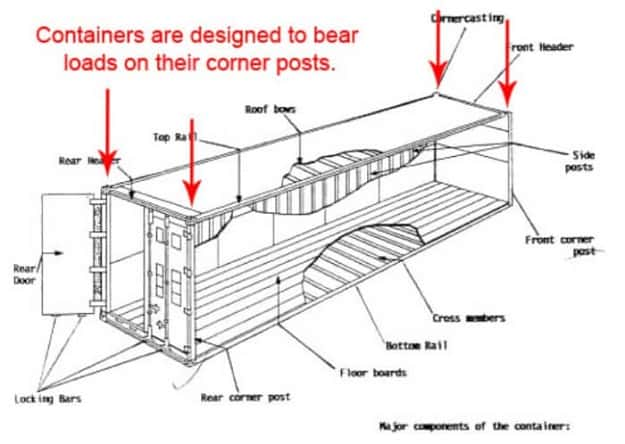 World Lifestyle
World Lifestyle
24. The Hole Nine Yards
But even in the face of this unfortunate reality, Wayne Martin had big, big DIY plans in mind for his property, and he was determined to see them through. The massive hole he dug in his backyard might have turned heads for all the wrong reasons at first, but the confusion of neighbors and passers-by alike soon turned to pure envy when the project started to come together — and you’re about to see why.
 Plantar un Arbol
Plantar un Arbol
23. Keeping Costs Down
This massive undertaking started with a 20-foot shipping container that Wayne came across online. As pricey as that might sound, a surprising amount of these containers are often sold off quite cheaply once they’re no longer in use, so Wayne’s budget wasn’t dented too badly—always a major plus when it comes to home construction.
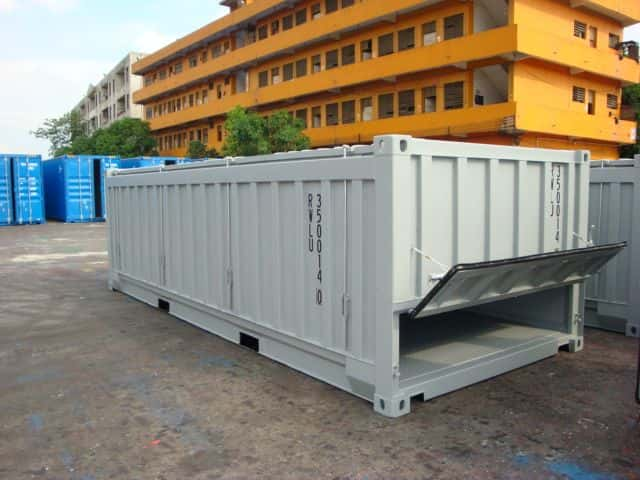 Pinterest
Pinterest
22. A Key Piece of the Puzzle
This container would be used to house Wayne’s entire project. It was the beating heart upon which everything else would be built, and it was one heck of a lucky find. But what exactly was he doing with it? Hey, glad you asked.
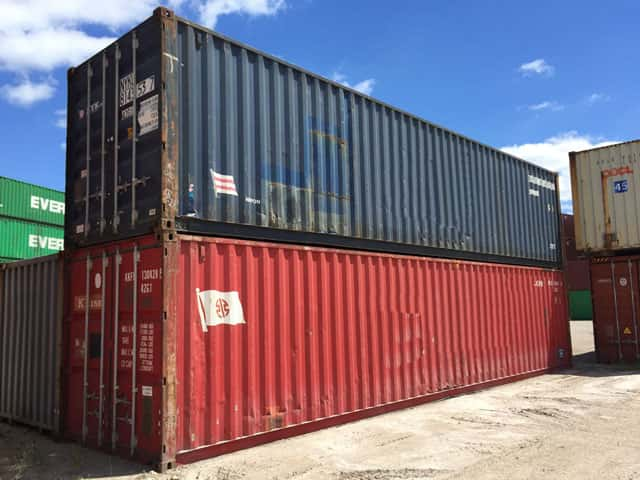 Western Container Sales
Western Container Sales
21. Knock Knock
For starters, one end of the container was sealed off, preventing anything from getting in, while a door was installed on the other end. Just your typical, standard issue door that would act as the only way in or out. Still confused? Don’t worry, we’re getting there.
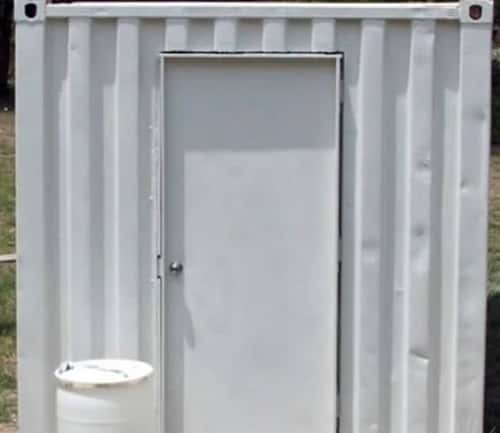 World Lifestyle
World Lifestyle
20. A Hole Lotta Space
The container was sealed and ready to go, and the next step was to lower that bad boy into the aforementioned hole in the backyard. Wayne made sure to leave two feet of extra space at the top so that he could add some steps later on, and laid down a six-inch layer of gravel along the bottom so that the container was resting on an even surface. You can probably tell where this is going by now.
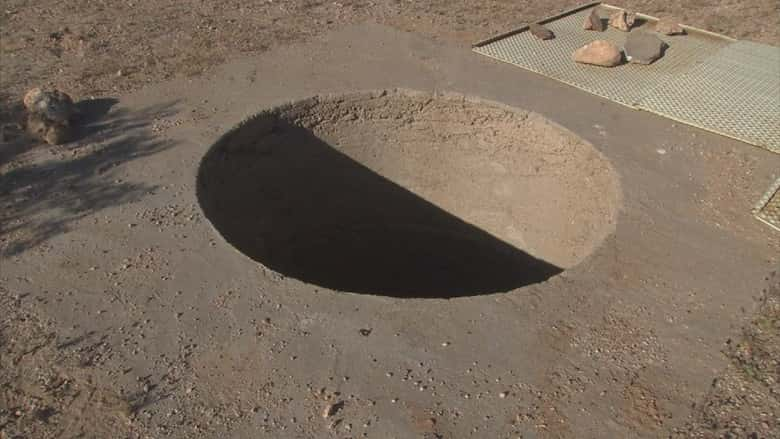 Earth Chronicles
Earth Chronicles

19. Outside Assistance
The container then had to find its way into the hole, and that was one task Wayne needed to call in an assist for. He’s only human, and thought it best to hire a septic company to move that giant hunk of metal using a truck and crane. Makes sense.
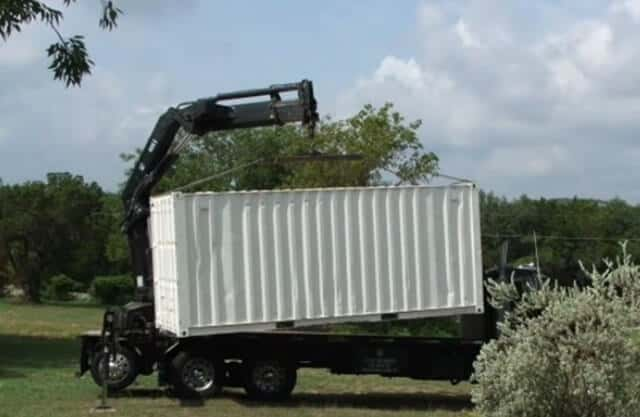 World Lifestyle
World Lifestyle
18. Making Some Room
Once the container was safely maneuvered into the hole, the next step involved making sure there was sufficient space around each side in order to keep working on it without much trouble. About 2 feet would do the trick.
 World Lifestyle
World Lifestyle
17. Feeling Pumped
With enough room to move around, Wayne could move on to the next step; installing a sump pump. These bad boys—often found in basements—are essential in making sure water doesn’t pool up and flood underground structures. Wayne was wisely ensuring he and his little passion project didn’t run into any watery surprises down the road.
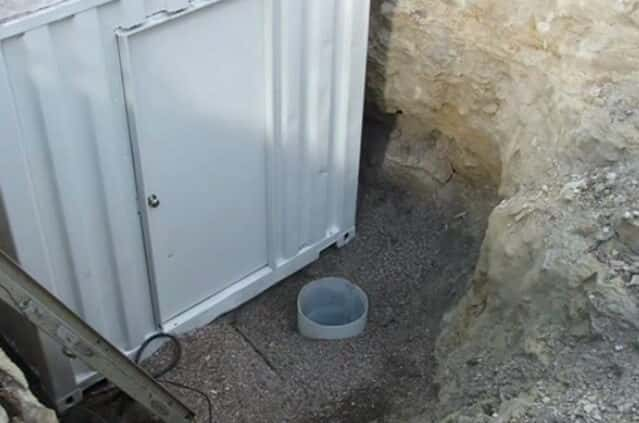 World Lifestyle
World Lifestyle
16. One Step at a Time
Next, concrete steps leading down to the container’s door were built for easy access. In case it wasn’t obvious by now, Wayne was building his very own underground bunker, and its exterior was coming along nicely. Just a few key touches to go before it’s time to take a gander inside.
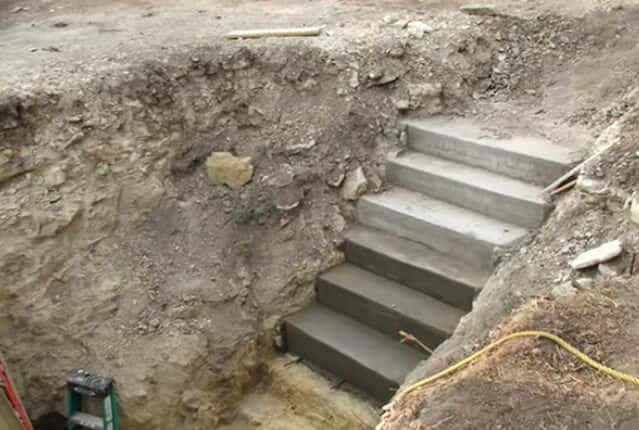 World Lifestyle
World Lifestyle
15. Beaming With Pride
Wayne is a safety-conscious sort, evidenced by the two I-beams he had installed along the top of the container. These would provide the makings of a supporting framework for some of the exterior’s final touches. You can never be too careful when it comes to elaborate homemade underground bunkers, apparently.
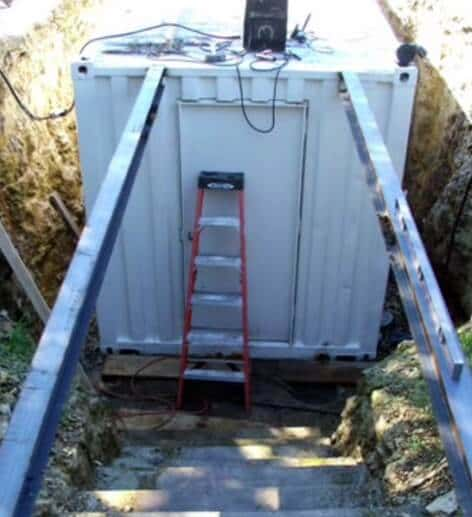 World Lifestyle
World Lifestyle
14. Jackhammering It Home
With the sturdy I-beams in place, the rest of the framework was to be built along the container’s roof. For this, Wayne broke out his trusty jackhammer and just went to town on that sucker. Slowly but surely, things were starting to come together.
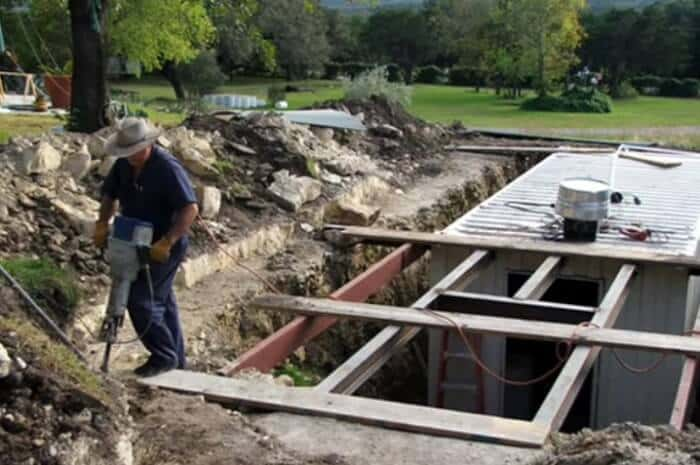 World Lifestyle
World Lifestyle
13. Strong and Stable
With the necessary support in place, Wayne then started laying down large, tough sheets of corrugated metal over the framework. These needed to be sturdy enough to support the weight of any man, woman, child, or particularly hefty animal that might decide to traipse across it at any point. Impromptu guests crashing in from above is the last thing anyone wants, right? Right.
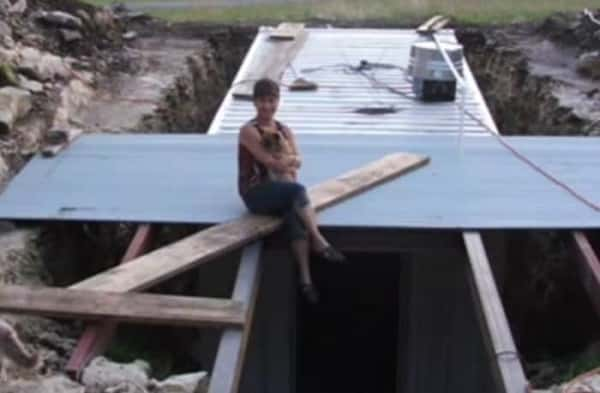 World Lifestyle
World Lifestyle
12. Positive Reinforcement
With the roof in place and nicely secured, the entryway was the next task. Wayne left a large, rectangular opening over the stairs, and put up a line of reinforcing bars along its edge. This guy is a serious workhorse.
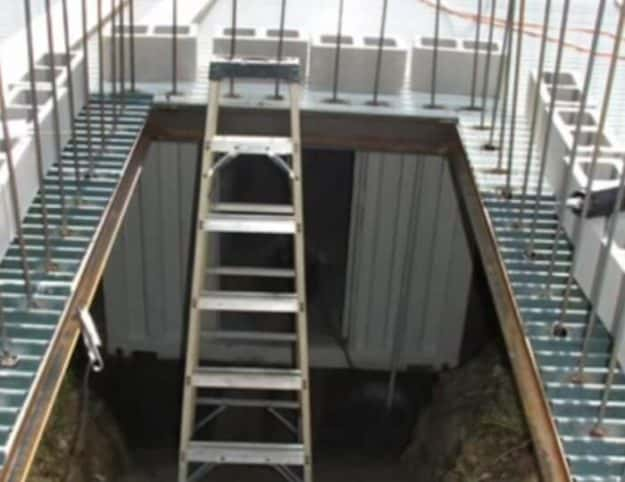 World Lifestyle
World Lifestyle
11. Rain, Rain, Go Away
Stability is the name of the game here, and to that end Wayne placed cinder blocks around the reinforcing bars and filled them with cement. The entrance—which is to be raised above the actual container—needed to be as sturdy as all get out, and protected from the elements as much as possible.
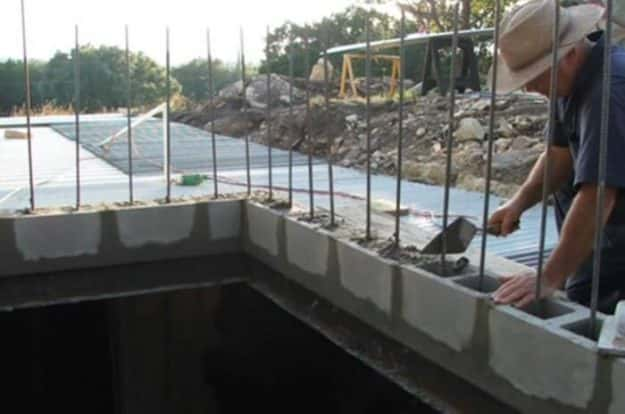 World Lifestyle
World Lifestyle
10. Pipe Down You Two
If people are going to be spending any amount of time underground, they’re probably going to want to be able to, you know, breathe. Luckily, Wayne thought of pretty much everything and had a couple of 12-inch air vents installed—one at the front end of the container, and one at the back. In addition, he laid down some PVC piping for any utilities the bunker would eventually need.
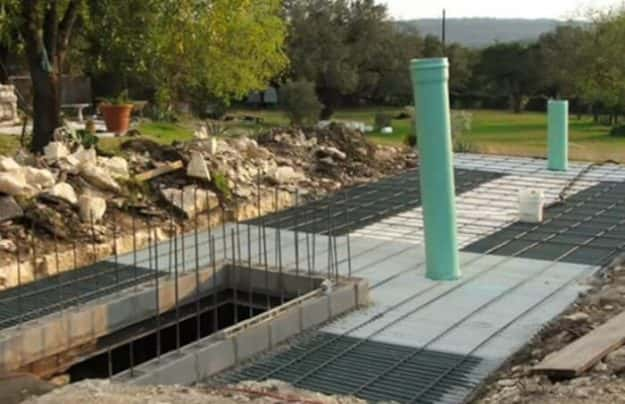 World Lifestyle
World Lifestyle
9. Playing the Long Game
All the essentials were in place, and the next step was to make sure they stayed that way. To reinforce everything up top, Wayne filled in all the gaps with a six-inch layer of concrete. He was thinking long-term.
 World Lifestyle
World Lifestyle
8. It’s the Little Things
After the concrete had dried, Wayne put down another set of cinder blocks around the entrance. For increased safety and stability, sure, but those exposed reinforcing bars poking up through the concrete also just looked a little cruddy, let’s be honest.
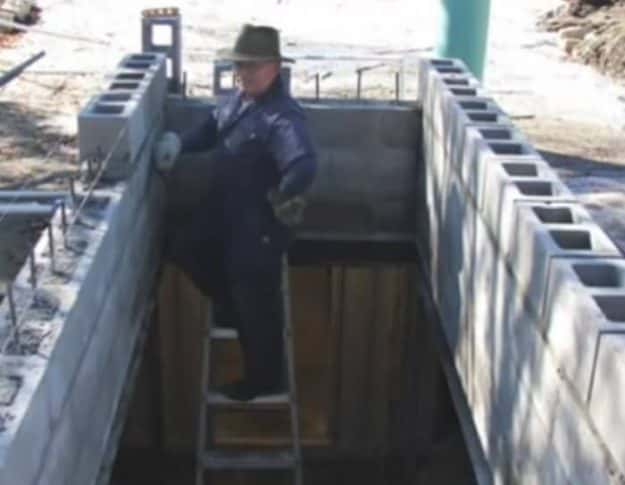 World Lifestyle
World Lifestyle
7. Easy Does It
And down we go. To test the bunker’s structural integrity, Wayne presumably took a deep breath, crossed his fingers, and prayed to every deity he could think of before removing the temporary supports underneath all that concrete and metal sheeting. It was looking good.
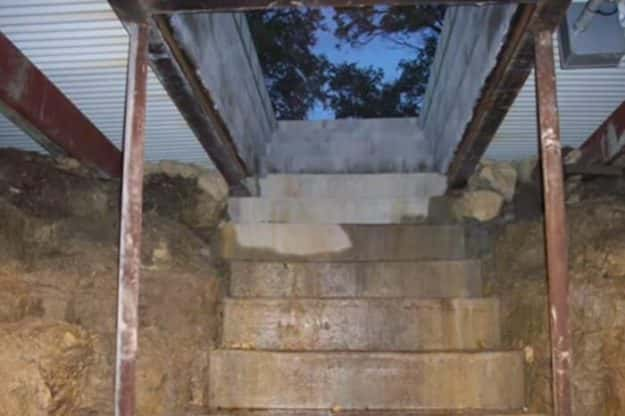 World Lifestyle
World Lifestyle
6. Drink Like It’s the End of the World
Show of hands; who thought this bunker was being built as a means of protection in the event of some catastrophic event in the future? It’s a reasonable assumption, but it turns out Wayne had plans of an altogether more merry sort. He wasted no time filling his brand spanking new wine cellar with all the wine and liquor it would hold, and for that we applaud him.
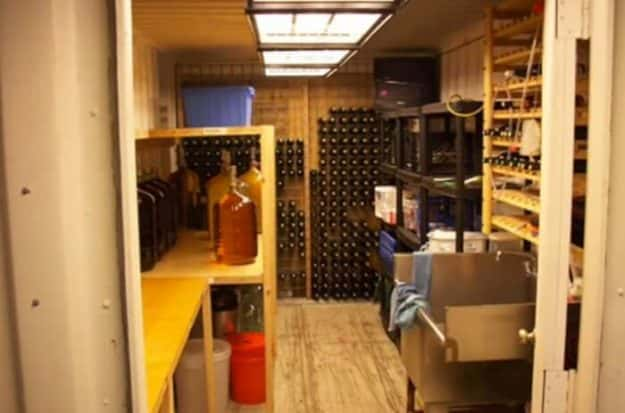 World Lifestyle
World Lifestyle
5. More Than Meets the Eye
Seen from another angle, it’s clear that the bunker could indeed function well enough as a place to escape a disaster on the surface despite its current, noble life purpose as a booze vault. And hey, if things really do go south, all that alcohol wouldn’t exactly hurt.
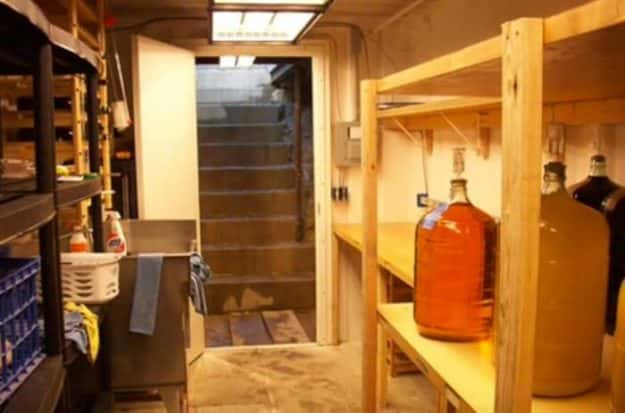 World Lifestyle
World Lifestyle
4. Be Supportive, Folks
Wayne knew what he was doing and absolutely nailed it, but if you happen to be getting that DIY itch, you’re feeling ambitious, and you have your eye on a nicely priced shipping container online, just be wary; those puppies are designed to be stacked, which means the corners hold most of their structural integrity. Proper support is everything.
 Publico
Publico
3. Keeping It (Relatively) Simple
Obviously, the shipping container approach is a blatant case of thinking outside the box—pardon the pun—and there are other, more conventional methods people have employed when building their own underground shelters. One such method: just use a whole butt-load of cinder blocks.
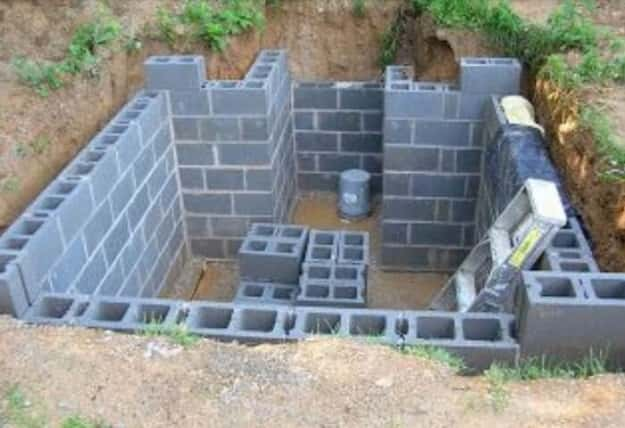 World Lifestyle
World Lifestyle
2. And Here’s One We Made Earlier
This handsome bunker wouldn’t look out of place on AirBnB. Bright, homely, clean, and far from the smallest living space you’ll come across if you spend a couple of hours trawling through apartment listings in your area, we’re half tempted to just go ahead and send them a deposit.
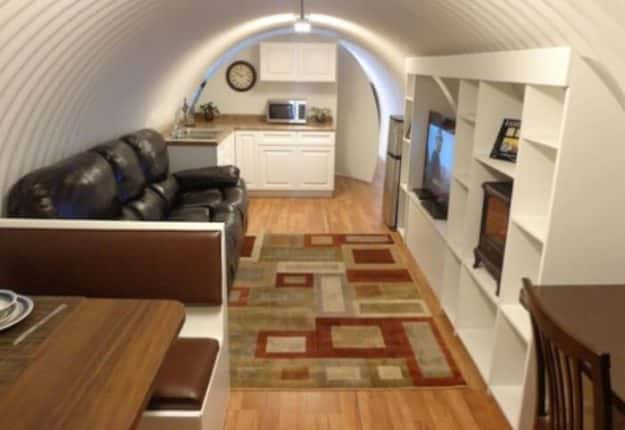 World Lifestyle
World Lifestyle
1. The Sobering Reality
Fiction has somewhat warped our sense of what an underground bunker is supposed to look like. Far from the vast corridors and spacious living quarters depicted in many a contemporary post-apocalyptic sci-fi story, the real thing is usually a much more modest, unimpressive affair. In reality, building one is a massive undertaking, and anything more than the bare essentials is often too much to hope for. Not that any of that would concern Wayne, mind you—he’s busy mulling over which Malbec he should pair with his steak tonight. Good for you, Wayne.











